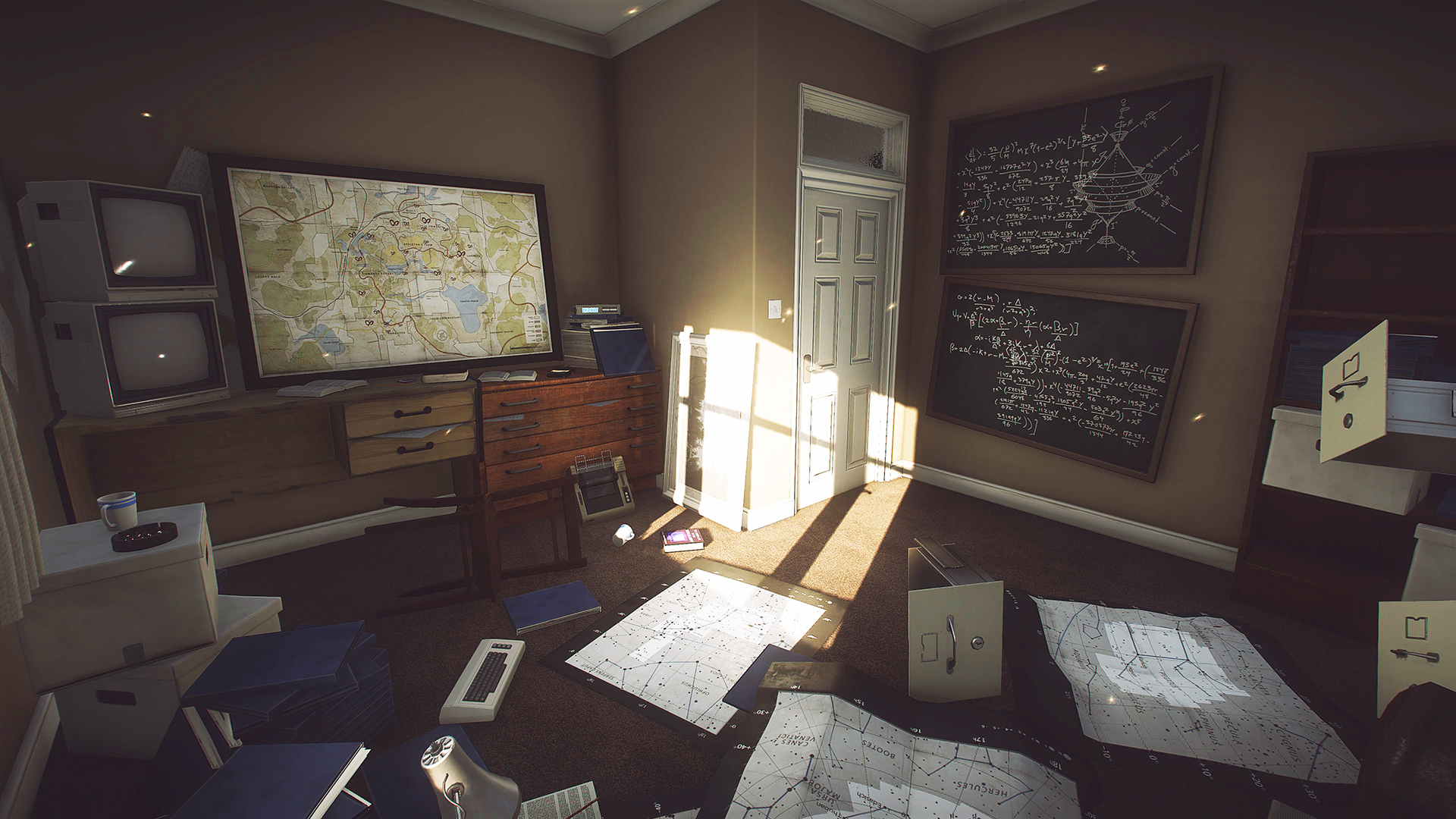The Game Design Tunnel Vision Problem
Not the forest for the games

I have witnessed every single game developer complaint cycle that has occurred in the last decade. This makes life something of a roguelike, given how the same arguments surface repeatedly. Recently, on social media, I saw someone perfectly encapsulate one of the worst possible thoughts you can have about game design; and they're not alone. If I had to find a common denominator here, it would be this: both game players and game developers can be built of only viewing games from their point of view. While this might seem obvious on the surface, let's dig deeper and discuss why tunnel vision is bad for game design in general.
My way or the highway
When I talk about tunnel vision in this context, I'm only referring to the act of looking at the video games and the broader industry from one specific point of view: yours. I see this everywhere, from critics, journalists, YouTubers, streamers, and consumers: "I don't like game X, so X is bad" or "I really like Y, so Y must be perfect".
This approach is visible all the time and is especially noticeable when a surprise hit emerges (games like Balatro, Vampire Survivor, and FTL are prime examples). You'll often hear a chorus of "Why is this game doing so well? It's just X." Game design analysis is still a mystery to many people, not just those who don't directly work within the industry. The ability to examine the UI/UX, progression systems, and the overall feel of a game might sound mysterious in some way. But for people like me - who do this on a daily basis - it's become as natural as breathing.
One problem here is that many people who discuss video games tend to view "video games" as something monolithic. They fail to recognize the vastly different design goals of games like Call of Duty, Elden Ring, or Stardew Valley (to take just three examples). In other words, if you play and like one particular kind of game, then you might tend to think that this is the standard by which all other games should be assessed. These same people might dismiss entire genres that they don't personally like, or they might think they can automatically take their game design expertise in one genre and achieve similar success in a completely different one.
Source: YouTube.
My earlier example of the surprise hit - where a social media post might denigrate a game because it appears to be copying a formula that's already established - is bad enough. But there are people on both the consumer and developer sides of the equation who take these views to the extreme. They believe that only their game - or their particular style of game - actually matters, and everything else is somehow lesser or unimportant.
Let's now get more specific and discuss some of the ways these views tend to articulate.
Loathsome wholesome
Many video games center around conflict of some kind and often involve actual fighting or combat. Gamers are diverse in terms of tastes, and so, there are plenty of gamers out there who don't want to play games containing violence of any form. This cohort must be large enough to warrant a movement in recent years that emphasized "wholesome" games.
This idea is great; there are many wholesome or "cozy" games that explore a range of ideas and themes without resorting to any combat at all. However, there are gamers and developers who have taken this view to the extreme, defining "wholesome" games as inherently better than all other forms. As a result, games that might appear charming or cozy on the surface - but that don't necessarily meet this definition of "wholesome" - can be accused of deceiving players in some way, with the implication being that the developers are deliberately setting out to con their fans. A game can appear to be wholesome or cozy but it may still explore dark themes (even if it doesn't resort to outright violence) - these experiences, too, can be the babies thrown out with the proverbial bathwater.

My point here is that while we often talk about toxic negativity, I'd argue there's also such thing as toxic positivity. These are cases where something can only be permissible if it's "good and pure", and if it meets these arbitrary standards, then it's also beyond criticism (according to its proponents). Of course, if developers want to make games like this, then that's perfectly fine. Game design diversity is valuable. The problem is not so much with the games themselves, but with how fans (and some designers) view them and draw conclusions from them.
Simple is stupid
Video games have been around long enough that the industry has experienced many design epochs. The largest and most significant of these was the mid-90s transition from 2D to 3D. Despite that change, a 2D revolution in the indie scene in the 2010s led to some of the most inventive games ever made. However, there remains a pervasive sentiment that 2D game design is itself inherently "simple" and can be a stepping stone to making "real" games (in other words, those in 3D).
One of the biggest signals that a person doesn't know what they're talking about when it comes to game design is when they make fun of 2D games for being "simple" or "easy to make". I find this sentiment present in the "anti-casual" crowd, who think that easy games are beneath them. The truth is that 2D game design is very challenging to master, in part because there are so many examples of it out there. For every Hollow Knight or Ori and the Blind Forest, there are countless 2D games that simply don't work in some fundamental way.
Designing video games in either 2D or 3D is a highly demanding, complicated challenge for a range of reasons. Even the "simplest" game is anything but. It's all too common for both gamers and developers to view complexity as being synonymous with quality. Even a design challenge like creating a great camera system for a 2D game is highly significant and consequential, and yet, many people are likely to be unaware that such a challenge even exists in the first place.

A related problem is the perception that all video games must have certain ingredients (like saving the world, being an all-powerful hero, etc...). One of the biggest evolutions of game design over the 2010s was the emergence of games that didn't adhere to these traditional standards. Many of these games emphasized elements like storytelling, art design, and cinematography rather than combat.
Of course, you can dislike so-called walking simulators, visual novels, or other games with untraditional gameplay - but that doesn't mean they aren't games. And as with the 2D example, you're mistaken if you believe that there are no significant design challenges present in these games. Throwing in some sad music, plopping some text on a screen, and forcing the player to walk slowly isn't going to automatically give you a masterpiece. Just like 2D games - just like any video game - there is a wide gulf between great and mediocre story-driven games.
Games are art
Yes, video games are definitely art. That statement should no longer be controversial. The question isn't whether or not games are art, the question is what this means in practice. There are many modern game designers who view a perfect game - that is to say, the platonic ideal of a game - as being one that must say something profound. In other words, if it isn't inspired by classic cinema or poetry, or of it fails to land a sufficient number of Aristotle references, then it's akin to disposable rubbish fit for peasants (who wouldn't understand these references anyway, don't you know?) This situation reminds me a little of the 2D/3D dichotomy, in that it's something of a category error. While an insightful piece of social commentary can inspire awe and wonder in the player, the graceful mechanical precision of jumping across platforms can be equally powerful on an artistic level.

Sometimes, this particular form of elitism can be expressed as derision for games that are inspired by other games as opposed to finding clear inspirations in various classical or apparently high-brow art. Needless to say, though, I've found that if you want to be a great game designer, you should indeed be playing and studying video games. Just as great painters learn about the techniques of painting and are inspired by the works of other painters, game designers can learn a great deal from other designers and their creations. This is why I see so many outstanding games from first-time developers and students: they played a ton of games, especially the ones that inspired them, and they made a study of those experiences in an attempt to learn what problems those games tackled and solved.
It's also true that the platonic ideal of a video game might not actually work in the real world, where video games are actually experienced. For example, some of the games lauded for coming close to this ideal - such as Return of the Obra Dinn and Pentiment - aren't necessarily shining examples of the best of game design. This isn't me being contrarian (and I'm not at all dismissing these games' artistic achievements); I'm simply looking at the real world data from actual players. This data surfaces a disconnect between the critical reactions and the real-world reception. Return of the Obra Dinn lost 40% of its player base on Steam before they even solved 6 fates and Pentiment has 54% churn on Steam before beating the first act. These stats tell us something about how real players actually experienced these games. It's easy to focus our attention entirely on critical response and even sales. But if we scratch the surface and examine the real-world engagement data, there are opportunities to better understand whether or not the design really works and what the developers can learn from real-world play.

Nurturing a garden of ideas
Video games are not monolithic. A game about jumping on bunny rabbits to collect carrots while listening to K-Pop is just as legitimate as a game exploring deep human emotions like love and grief. There's also nothing wrong with enjoying or preferring one particular style of game over another; but we have a problem when entire genres or sets of ideas are dismissed as being "wrong".
My advice for developers is simple: please understand that you might love your own game (this is very understandable), and your friends and fellow designers might also love it. But this doesn't mean much if every person who plays it quits after the first forty seconds. Maintaining a sense of curiosity and rigorous play testing will help you overcome your own biases as you seek to understand how your design translates into real-world play.
